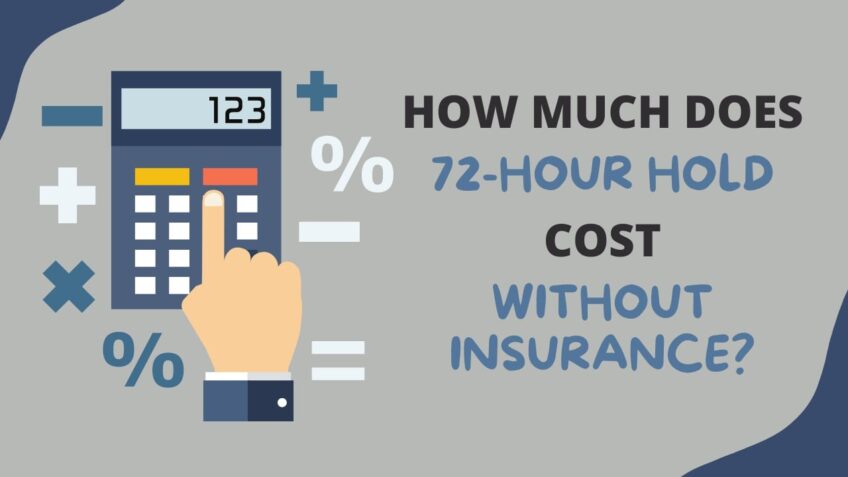Introduction
Welcome to this comprehensive guide on how to start a mental health program. In today’s world, mental health has become an increasingly important issue, and establishing a program to address it is crucial. This step-by-step guide will provide you with the necessary information and guidance to create and implement a successful mental health program.
Having a mental health program in place can make a significant difference in the well-being of individuals and communities. By offering support, resources, and promoting mental health awareness, you can positively impact the lives of many. So, let’s dive in and discover how to begin a mental health program.
With the rise of mental health concerns globally, it has become more important than ever to prioritize mental well-being and establish effective support systems. A well-designed mental health program can provide individuals with the necessary tools and resources to navigate their mental health challenges, leading to improved overall well-being and community resilience.
Mental health programs are designed to address the diverse needs of individuals and communities experiencing mental health issues. By creating a safe and accessible space, these programs aim to foster a sense of belonging, understanding, and support for those seeking help. With the right approach, a mental health program can have a profound impact on reducing stigma, promoting early intervention, and improving access to crucial services.
Through a comprehensive mental health program, individuals can gain access to a wide range of services and support. These may include counseling, therapy, educational workshops, support groups, crisis intervention, and referrals to specialized care. By offering these services, mental health programs aim to empower individuals on their journey towards recovery and provide hope for a brighter and healthier future.
In addition to individual support, mental health programs also play a critical role in promoting mental health awareness within communities. By implementing educational campaigns, workshops, and outreach initiatives, these programs strive to destigmatize mental health issues and increase public understanding. By raising awareness, mental health programs encourage early intervention, reduce barriers to seeking help, and ultimately contribute to a healthier and more resilient society.
Furthermore, mental health programs not only benefit individuals directly, but they also have a positive ripple effect on communities as a whole. By addressing mental health at the community level, these programs enhance social cohesion, improve productivity, and reduce the overall burden on healthcare systems. Through their comprehensive approach, mental health programs have the potential to transform communities, promoting well-being and fostering a collective sense of support and understanding.
To begin your mental health program, this guide will provide you with clear, step-by-step instructions to ensure every aspect is carefully considered. From establishing goals and objectives to securing funding and implementing comprehensive services, this guide will equip you with the tools needed to create and maintain a successful mental health program. By following this guide, you are taking an important step towards positively impacting the lives of individuals and communities, and contributing to a world where mental health is prioritized and supported.
Understanding the Need for a Mental Health Program
Why is a Mental Health Program Important?
A mental health program plays a crucial role in addressing the increasing demand for mental health support and services. Mental health issues have a profound impact on a significant portion of the population, affecting individuals, families, and communities in various ways. By establishing a comprehensive mental health program, you are creating a safe and accessible space for individuals to seek help, receive support, and access the necessary resources.
One of the most significant contributions of a mental health program is the reduction of the stigma surrounding mental health and the promotion of a greater understanding of mental well-being. By fostering an environment of understanding and acceptance, a mental health program tackles the misconceptions and negative attitudes associated with mental health conditions. It provides a platform for education, awareness, and early intervention, empowering individuals to identify and address their mental health concerns before they escalate into more severe conditions.
A mental health program also offers a range of benefits to individuals, families, and communities. By providing a support system, it helps individuals in distress to navigate their challenges more effectively. It offers a safe space for individuals to share their experiences, receive guidance, and develop coping mechanisms. The program also fosters a sense of belonging and community, allowing individuals to connect with others who may be facing similar struggles.
Identifying the Target Population
Before launching a mental health program, it’s crucial to identify the specific target population you aim to serve. While mental health issues affect people of all backgrounds, tailoring your program to the unique needs and challenges of a particular group can enhance its effectiveness and impact.
Conducting thorough research and collaborating with community organizations are essential steps in identifying the target population. Engaging in open dialogue with potential program participants can offer valuable insights into the specific mental health needs of the community. By actively listening to their concerns and experiences, you can gain a deeper understanding of the challenges they face and design services and initiatives that are tailored, relevant, and effective.
For example, if your target population is youth, you might focus on promoting mental health awareness in schools, providing counseling services specifically designed for young individuals, and organizing youth-oriented mental health workshops and support groups. On the other hand, if your target population is veterans, you may need to collaborate with veteran support organizations, offer specialized PTSD treatment programs, and provide resources for reintegration into civilian life.
By honing in on the specific needs of the target population, your mental health program can make a more significant impact and effectively address the unique challenges faced by different groups within the community.
If you are interested in starting a mental health program, you can check out this pillar article that provides relevant information and resources.
Developing Your Mental Health Program
Establishing Clear and Specific Goals and Objectives
Setting clear goals and objectives is crucial for the success of your mental health program. Clearly define what you hope to achieve with your program, such as increasing access to mental health services, improving mental well-being, reducing stigma, and promoting overall wellness.
Ensure that your goals and objectives are specific, measurable, achievable, relevant, and time-bound (SMART). For example, instead of setting a vague goal like “increase access to mental health services,” set a specific goal such as “increase the number of individuals accessing mental health services by 20% over the next year.”
By setting specific goals, you provide yourself with a clear framework to measure the progress of your program and evaluate its impact. This will help you stay focused and ensure that your efforts are aligned with the desired outcomes.
Creating a Comprehensive Framework and Structure
Once you have established your goals, it’s time to create a comprehensive framework and structure for your mental health program. This includes determining the organizational structure, staffing needs, and the range of services and resources you will offer.
Consider partnering with local mental health organizations, healthcare providers, and community leaders to leverage existing resources and expertise. Collaborative efforts can strengthen your program and enhance its reach and impact. This collaborative approach allows for a more holistic and integrated system of care, ensuring that individuals receive the support they need at every level.
When designing the framework and structure, take into consideration the unique needs of your target population. For example, if your program focuses on youth mental health, consider incorporating school-based services or partnering with local schools to reach a larger number of young individuals in need.
Securing Sufficient Funding
Securing adequate funding is crucial for the long-term sustainability and success of your mental health program. Conduct thorough research to identify potential funding sources, such as government grants, foundations, corporate sponsorships, and community fundraising campaigns.
When seeking funding, clearly communicate the specific objectives and benefits of your program. Emphasize how your program aims to address an existing need and the positive outcomes it strives to achieve. Present compelling evidence, such as testimonials, case studies, and statistics, that highlight the impact of mental health programs in improving the overall well-being of individuals and communities.
Develop a comprehensive budget that outlines the expected expenses and projected costs of running your program. Be detailed and transparent about how funds will be allocated and the expected outcomes they will contribute to.
Consider diversifying your funding sources to reduce dependence on a single channel. This can help mitigate financial risks and ensure the ongoing viability of your program.
Remember to regularly evaluate and report on the progress and impact of your program to potential funders. This will not only demonstrate accountability but also increase your chances of attracting continued support for your mental health program.
By establishing clear and specific goals, creating a comprehensive framework, and securing sufficient funding, you are setting a solid foundation for the success and sustainability of your mental health program. This thoughtful and strategic approach will enable you to make a significant and positive impact on the mental well-being of individuals and communities.
Implementing and Evaluating Your Mental Health Program for Maximum Impact
Promoting Awareness and Outreach: Engage the Community
Once your mental health program is established, it becomes crucial to proactively promote awareness and reach out to your target population. Utilizing multiple communication channels, such as social media platforms, local newspapers, and community events, will effectively spread the word about your program to a wider audience.
Developing informative and engaging educational materials is essential in providing individuals with valuable information about mental health, available resources, and how they can seek help. Collaborating with local schools, community centers, and faith-based organizations will allow you to conduct workshops, seminars, and awareness campaigns, reaching individuals in various settings.
Encourage community participation by organizing interactive events and panel discussions. By involving prominent mental health professionals, community leaders, and individuals with lived experiences, you can create a safe and inclusive space for open dialogue, reducing stigma, and fostering compassion.
Providing Comprehensive Services: Tailor-Made for Diverse Needs
A successful mental health program should offer a range of comprehensive services that address the diverse needs of individuals. In addition to individual counseling and group therapy, consider incorporating educational workshops, support groups, and referrals to specialized services. This multifaceted approach ensures that individuals receive the support that best suits their unique circumstances.
Ensure that your program is culturally sensitive and inclusive, respecting and honoring the unique experiences and backgrounds of individuals seeking support. Collaborate with mental health professionals and organizations from diverse communities to develop culturally relevant materials, facilitate language accessibility, and provide services that are sensitive to different cultural practices.
Consider integrating holistic approaches, such as yoga, mindfulness, and art therapy, into your program. These complementary techniques can enhance mental well-being and provide individuals with different avenues for self-expression and self-care.
Evaluating Program Effectiveness: Measuring Impact and Continuous Improvement
Regularly evaluating the effectiveness of your mental health program is crucial for its continuous improvement and growth. Establish evaluation measures that encompass various aspects, including individuals’ mental well-being, access to services, and overall satisfaction.
Collect valuable data through surveys, interviews, and feedback mechanisms to gather insights and identify areas for improvement. Effectively analyze and interpret this data to identify trends, patterns, and gaps in service delivery.
Utilize outcome measures, such as changes in reported symptoms or improvements in quality of life, to quantitatively assess the impact of your program. Additionally, qualitative feedback from program participants can provide valuable narratives and testimonials that highlight the program’s efficacy and contribute to its overall success.
Use the information obtained from program evaluations to refine your services and make any necessary adjustments. Continuously engage with program participants, community stakeholders, and relevant experts to ensure ongoing relevance and effectiveness.
By implementing these strategies and continuously evaluating your program, you can maximize its impact and ensure that it effectively addresses the mental health needs of your target population. Remember, a successful mental health program is an ongoing journey towards improving the well-being and resilience of individuals and communities.
Conclusion – Creating a Positive Impact on Individuals’ Lives Through Careful Planning
Starting a mental health program requires careful planning, dedication, and a commitment to making a positive impact on individuals’ lives. By following this step-by-step guide, you are well on your way to creating a successful mental health program that addresses the unique needs of your target population.
When embarking on this journey, it is important to remember that starting small and gradually expanding your program can often lead to greater success and sustainability. By beginning with a focused approach, you can ensure that you are meeting the immediate needs of your community while building a solid foundation for future growth.
In addition to careful planning, staying connected with your community is key to the success of your mental health program. Actively seek out collaboration opportunities with local organizations, healthcare providers, and community leaders. By forging these partnerships, you can leverage their expertise and resources, enhancing the impact of your program and reaching a wider audience.
As you navigate the creation of your mental health program, always prioritize the well-being and mental health of the individuals you serve. Remember that each person is unique and may require different types of support and services. By remaining open-minded and adaptable, you can ensure that your program caters to the diverse needs of your target population.
By making mental health a priority and establishing a program, you are not only empowering individuals to seek help and support, but also contributing to the overall well-being of your community. Through your dedication and commitment, you are creating a safe and supportive space for those in need, offering hope and healing to individuals who may have otherwise struggled in silence.
As your mental health program grows and evolves, make sure to regularly evaluate its effectiveness. Collect valuable data through surveys, interviews, and feedback mechanisms to understand the impact of your program on individuals’ mental well-being, access to services, and overall satisfaction. This evaluation process will allow you to identify areas for improvement and make necessary adjustments to continuously enhance the quality and effectiveness of your program.
In conclusion, starting a mental health program is a noble endeavor that requires passion, dedication, and a commitment to serving others. Through careful planning, collaboration, and a focus on individual well-being, you can create a program that not only addresses the unique needs of your target population but also contributes to the overall well-being of your community. By prioritizing mental health, you are creating a brighter future, one that offers support, hope, and healing to those in need.





